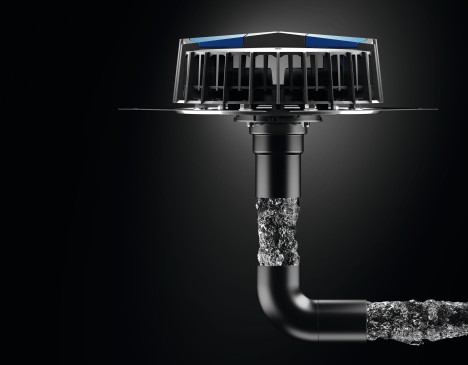When Pluvia saves football
Ideal roof drainage
At numerous football stadiums around the world, the Pluvia roof drainage system from Geberit helps protect the public from storms and rain. The system makes sense both because of the design and for space reasons.
When it's pouring down, football is no fun - at least not when you're standing on the pitch. However, many football stadiums have a roofed spectator area; and on many of them the Geberit Pluvia roof drainage system is installed. As a result, the audience celebrates in the dry.
The system sucks the water from the roof via pot-like inlets using negative pressure. The pipes quickly fill completely with water. A closed, fast-flowing water column is created. The suction power generates a high drainage capacity, so relatively few inlets are needed on the roof. Thanks to this power, the drainage pipes can run horizontally under the roof for longer distances.
Advantages for architecture and construction
According to Geberit Product Manager Andreas Mosebach, these points are a major advantage of the system in stadium construction. The roof rarely covers the entire stadium. The pitch remains open, walls are only on the outside. Downpipes can just be installed there, making longer horizontal pipes unavoidable. “Pluvia is therefore an ideal solution for stadium construction.”
Added to this is the high litre capacity of the drain pots. “A stadium roof has a large surface area,“ says the product manager. “The Pluvia drainage system achieves a high output with little material. So an entire stadium roof can be drained with just a few downpipes,“ says Andreas Mosebach. This means that the system requires little space and offers great architectural freedom, which is an important factor in stadium construction. “Stadiums are usually architectural showpieces.“
All over the world, Pluvia is in use on football stadiums. Here is a selection.
Know-How installed
The syphonic roof drainage system Geberit Pluvia uses pipes with small dimensions, which fill completely with water when it rains heavily. A closed water column thus forms in the pipe, which results in natural negative pressure and also ensures a high discharge rate.

